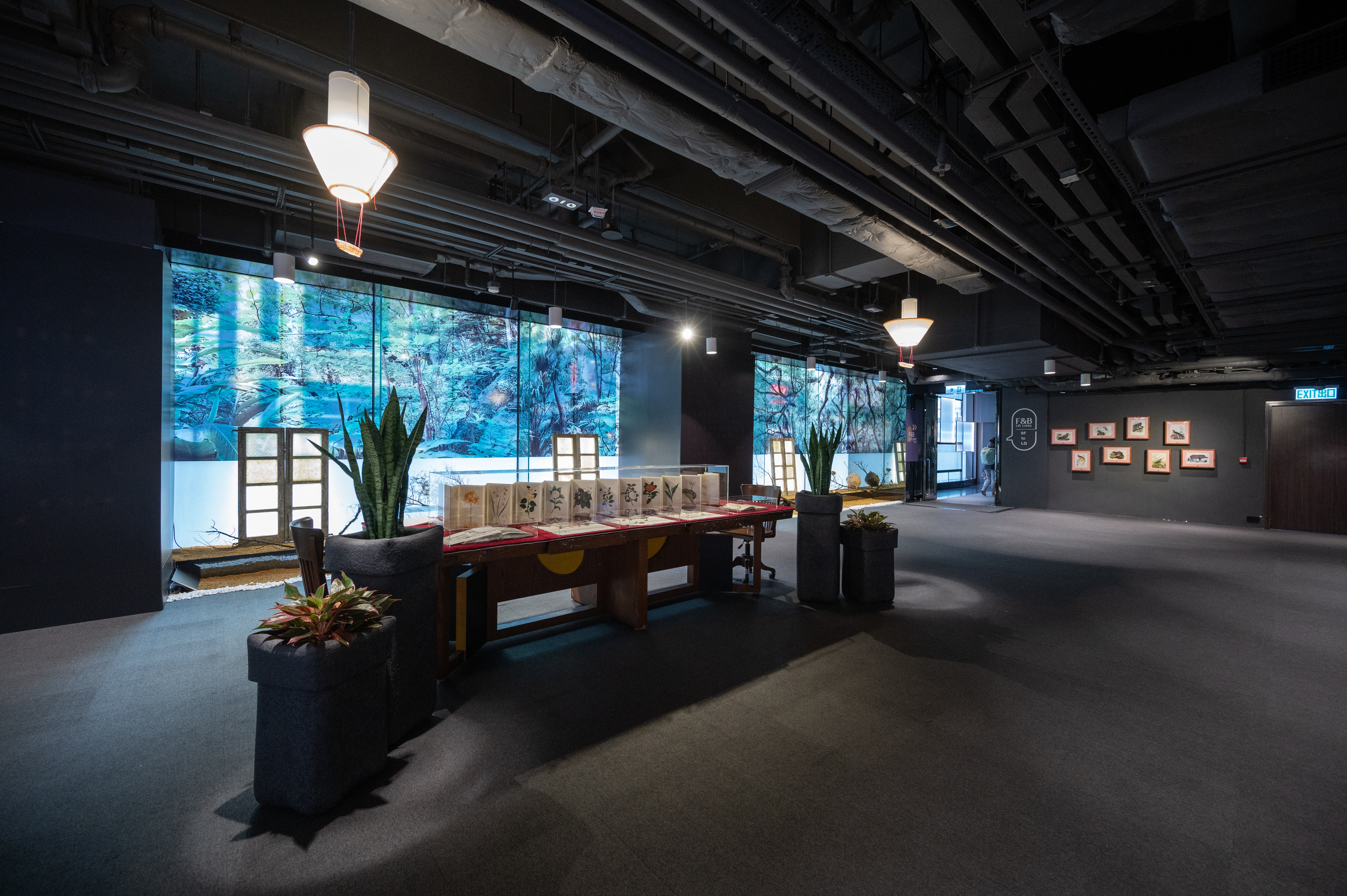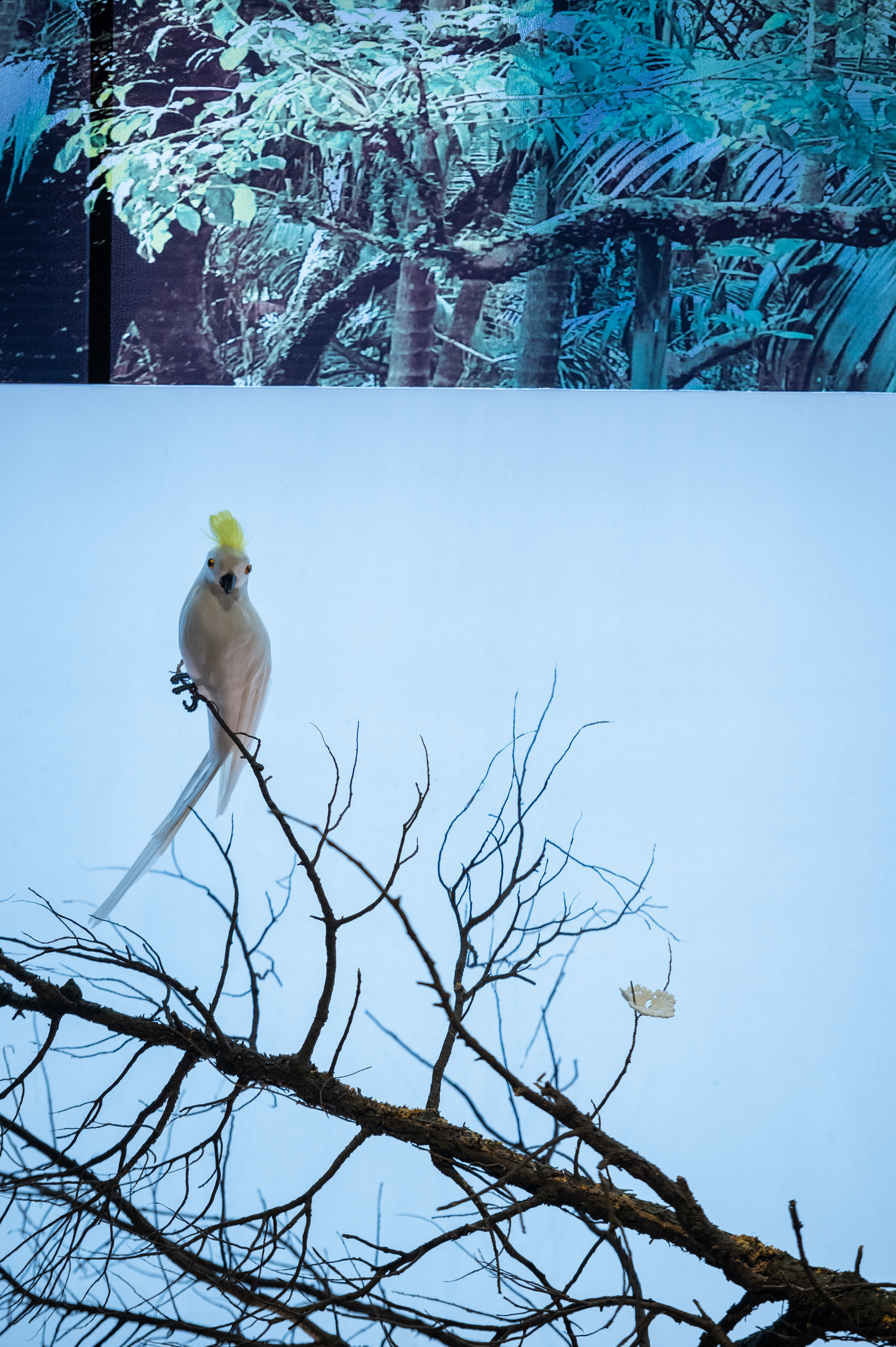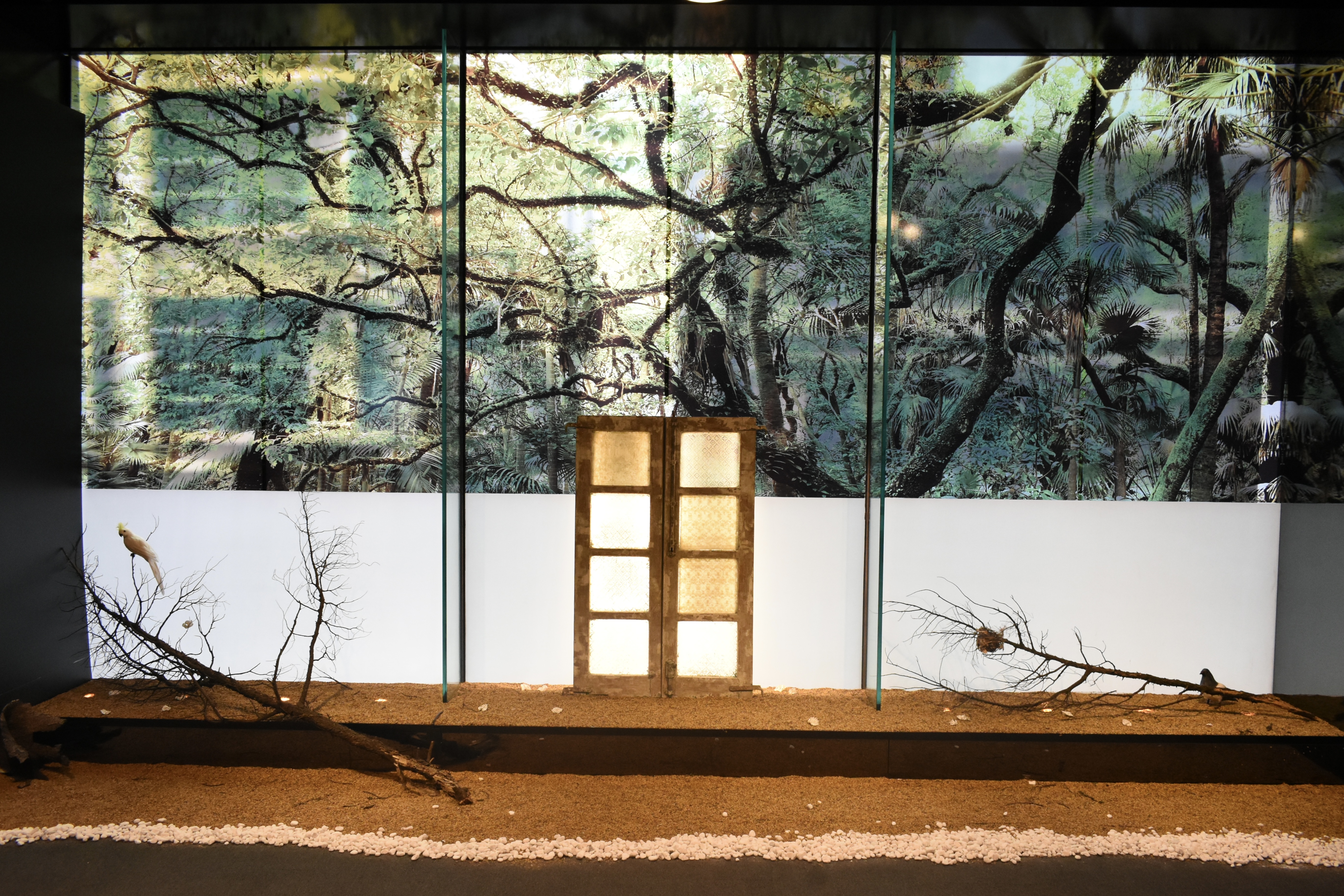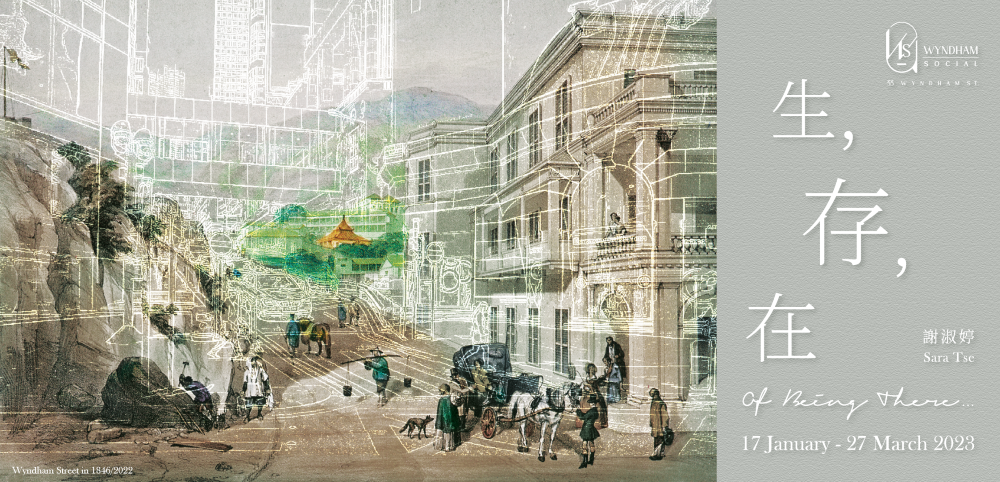One of my favorite movies is 2046, Wong Kar Wai’s sequel to his most famous film, In the Mood for Love. While it seems that In the Mood for Love holds a fonder place in most cinephiles’ hearts, 2046 plays more adventurously with themes of nostalgia, memory, and pining for that which is passed and lost. Hong Kong, at once suspended in time while also rapidly leaving behind all history and context, is no stranger to that sense of perpetual impermanence.

Nostalgia plays a strong role in the city’s cultural and social consciousness, and it is a theme that Hong Kong artist Sara Tse explores through several mediums in her solo exhibit at Wyndham Social, “Of Being There…”. They range from exquisite porcelain-moulded art to conceptual projection installations and hand drawings of animals and plants. The exhibit is described as not just a revisiting and re-envisioning of personal and community histories, but also a retrospection of the artist’s creative evolution. She also has hosted paper flower and bird sculpture workshops during the exhibition (which participants can then display at the venue). Her reason for teaching how to make these stems from the historical predecessor of Wyndham Social, which was a forgotten botanical garden called Green Bank.

“Hong Kong has changed so rapidly that even those of us who were born here are not quite familiar with its original appearance, nor do we realize how many plants and animals in Hong Kong are not native species. This is akin to how most Hong Kong people have ancestors from other places who migrated to Hong Kong, which has a lot to do with the history of Hong Kong as a colony and adds to its unique zone in space and time,” explains Tse in an exchange with me.
“However, its original landscape is rapidly disappearing, old buildings are being demolished, country parks are shrinking in size. Trees are disappearing, and the number of birds roosting locally will be reduced. I want to reconstruct the vanishing landscape as it once existed, even if only just for a moment. I want to reveal its traces of memories, which is very important for the times we now live in.”

Tse’s main medium is pottery, which is displayed in two installations here: the two-dimensional artworks of porcelain castings Leaves Falling as Songs Coming to My Mind and an in-situ installation, Pai Tau Village. Wyndham Social, as it happens, was a special and fitting choice for her exhibit. “When I was young, I had already seen Wyndham Street and the landscape of other areas of Hong Kong in paintings by Murdoch Bruce, but at the time I was not familiar with the history and landscape,” she says.
“In 1998, I received a ceramic award from Pottery Workshop, which was in the Old Dairy Farm Depot on Wyndham Street. I was free to use the facilities in Pottery Workshop for one year, and this residency culminated in my first solo exhibition in the gallery of Pottery Workshop and the gallery of the Fringe Club. As you can tell, on Wyndham Street is close to my heart and I have always been curious about its stories. When I was told that I would have a chance to do an exhibition at Wyndham Social, I decided to do a site-specific installation.”

Like many spots in the city, 33 Wyndham Street had a different identity as Green Bank in colonial Hong Kong. Tse pays tribute to the botanical garden through a historical photograph on the window walls, as well as with botanical and zoological displays in the lobby of Wyndham Social. “Hong Kong has only become a modernized city for about 180 years. It is very young as compared with other big cities like New York or London. However, it is changing rapidly. When we look at Wyndham Street in paintings by Murdoch Bruce in 1846, all the buildings have disappeared; whereas in London or New York, we can easily find buildings with 180 years of history or even more. A stroll on the streets would lead to sightings of the juxtaposition of buildings from different eras,” she tells me. She acknowledges that even the books and postcards displayed in this exhibition, which are about Hong Kong’s Wyndham Street and Green Bank, had to be purchased online from the UK and the US.

Green Bank itself is a locus of a long-lost history that few know about, Hongkongers included. “Starting from the 1860s, Hong Kong botanists collected seedlings from various places and stored them at Green Bank. After the seedlings grew, they were transported to what was then the English Botanical Garden.” That garden, which was built in 1860 and opened to the public in 1871 (and now called Hong Kong Zoological and Botanical Gardens) is seen as the HKSAR’s oldest park, though it somewhat obscures the role Green Bank played in assisting the collection and research of native plants, birds, and mammals.
“Botanists and the government worked together to plant different tree species to enable broad-scale reforestation, including the oak tree Ficus Elastica and neem tree Melia Azedarach from India. Many of the trees we planted at my old school of Kwai Chung Public Schoo were exotic species, including the Araucaria from Australia and the Melaleuca and Frangipani from Mexico. I believe they are the offspring of saplings brought to Hong Kong, to Green Bank. These plants have taken root in Hong Kong and are widely grown today.”

The exhibit therefore relies on the symbiosis of “living, preserving and being mindful” (生 / 存 / 在). David Chan, the exhibit curator, outlined “living” as “Tse embracing the different facets of life and its own logic and time.” “Preserving” is Tse’s discipline of “actively preserving memories and materials from the past to deconstruct the paradox of human fate and how history is documented objectively.” Finally, “being mindful” is existing in the here and now, “bearing witness to minute changes to a place and its influences on our identity.”
As a child, Tse lived in Central Kwai Chung Village. Then she and her family were forced by their landlord to move out, and she felt “as if my hometown had vanished.” After she became a mother, she brought her own children back to the village where she used to live, and “I felt that familiar helplessness as I faced my now demolished and unrecognizable home.” She draws strength and comfort from the assurance that “our hometowns are not necessarily physical locations; but rather the location where we live together with our families, and gather together to create memories – the hometown that lives in our hearts.”

This is indeed the common refrain of many families that have experienced emigration or displacement, and even if one stays in Hong Kong all their lives, there are plenty of stories like Tse’s. “My father is Indonesian-Chinese, and my mother is Malaysian-Chinese. After the two of them went to China to study, he was refused entry and unable to return home, so my family ended up settling in Hong Kong.” She relates how her parents spoke Hakka, a “foreign” dialect to Hongkongers, while she had to study hard to relate with others in Cantonese. Her story – and art – projects a sense of beautiful fragility, reflecting how she sees life itself.
Yet far from projecting a “doomer” attitude (which might be more common among some groups of young people), Tse says that love nourishes her. Eleven years have passed since her mother’s departure, but “I can still feel her warm love. Love is an energy and inspires me to give life my all. As a parent myself, I always give my children abundant love, hoping that even if my life stops abruptly, my children will still know that my presence will never leave them.”
Similarly, Tse has faith in the enduring power of a piece of art, in whatever medium, to touch, comfort, or remind of a certain moment that is lost but still echoing in our subconscious. “From poetry to music, I believe my artistic pursuits are to bring out messages in certain times and spaces, and bring a little warmth to all of us.”
“Of Being There…” runs from 17 January – 27 March, 2023


